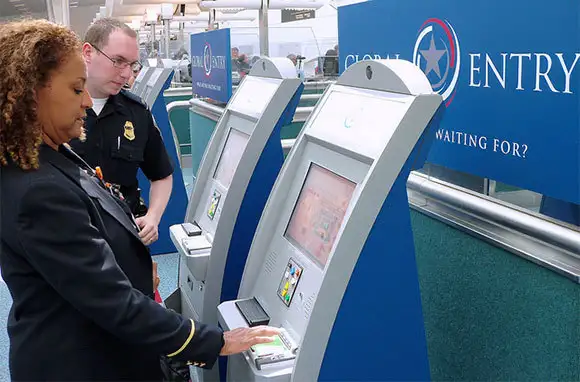
Whatever the purpose, immigration lines at airports (and border crossings) and security lines at airports generally share one characteristic: You stand in line anywhere from minutes to hours for a face-to-face transaction that takes no more than a minute or two. The rest of the time is totally unproductive waiting and queuing.
Fortunately, a few programs let you avoid some of the worst of those lines, at least sometimes, and at some airports and borders. The federal government, through U.S. Customs and Border Protection and the TSA, operates a handful of robust programs, both here and abroad. And a few private ventures have tried to move into the airport security process with limited success; presently, only one—Clear—seems to be operating.
Like this story? Join the 1 million other travelers who read our free Deal Alert newsletter. It’s full of our best tips, trip ideas, and travel deals. Subscribe here today!
Image Gallery
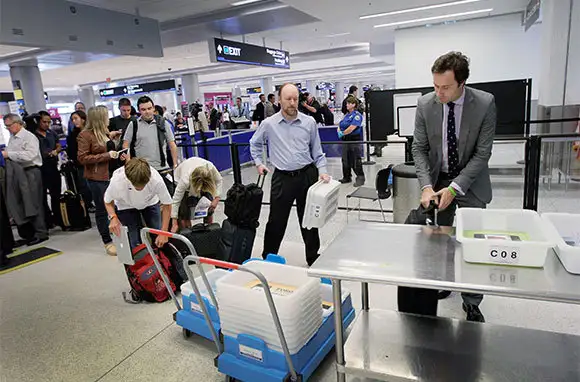
Beating the Lines, at Least Sometimes
The key is to get into a "trusted traveler" program. That means you go through a detailed, one-time enrollment examination and provide fail-safe biometric identification. Once in, you can bypass at least some of the usual repetitive hassles every time you travel. As many of you would say, "It's about time."
The U.S. government operates five separate trusted-traveler programs for customs and immigration clearance at international gateways and one for TSA security clearance at domestic airports. Enrollment in each requires that you apply (you can do this online), submit a fee, then go to an "enrollment center" for an interview, with appropriate ID—typically, a passport plus a driver's license verifying a permanent address. At the interview—which is painless and easy to pass for most—you get your picture taken and provide some other biometric sample. The interview typically takes no more than a half hour.

Beating the Lines, at Least Sometimes
The key is to get into a "trusted traveler" program. That means you go through a detailed, one-time enrollment examination and provide fail-safe biometric identification. Once in, you can bypass at least some of the usual repetitive hassles every time you travel. As many of you would say, "It's about time."
The U.S. government operates five separate trusted-traveler programs for customs and immigration clearance at international gateways and one for TSA security clearance at domestic airports. Enrollment in each requires that you apply (you can do this online), submit a fee, then go to an "enrollment center" for an interview, with appropriate ID—typically, a passport plus a driver's license verifying a permanent address. At the interview—which is painless and easy to pass for most—you get your picture taken and provide some other biometric sample. The interview typically takes no more than a half hour.
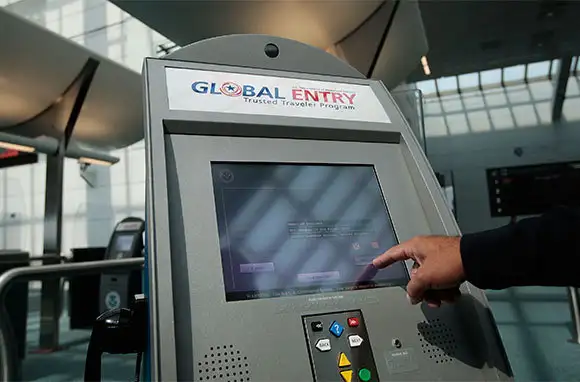
Global Entry
What It Does: Expedites customs and immigration clearance at airports for trusted travelers returning to the U.S. from a foreign country.
How It Works: On arrival at a gateway airport, you proceed to a Global Entry kiosk, present your machine-readable passport or U.S. permanent-resident card, place your fingertips on the scanner for fingerprint verification, and make a customs declaration. The kiosk issues a transaction receipt and directs you to baggage claim and the exit, bypassing any intermediate lines. Of course, you may always face the remote possibility of being asked for more details.
Where It Works: Currently, Global Entry kiosks are available at 34 of the larger U.S. airports, eight Canadian airports with U.S. preclearance, plus Dublin and Shannon, Ireland. Other locations may be added. So far, Global Entry is not available at cruise ports, but those may also be in the works. Check here for specific locations.
Global Entry members can also use dedicated customs and immigration lanes when arriving at the Auckland, Wellington, and Christchurch airports in New Zealand and the automated SmartGate passport-clearance system at international airports in Australia. No separate membership is required.
Eligibility: Global Entry is open to U.S. citizens, permanent residents, Canadian citizens, Dutch citizens, South Korean citizens, and Mexican nationals. However, Global Entry can deny membership for a number of reasons, chiefly if you have a criminal record or have violated customs regulations in the past.
Enrollment: Apply online here and submit with a nonrefundable one-time $100 fee covering five years. Then schedule and go through an interview at a Global Entry center. Most are at large airports; check here for locations and hours.
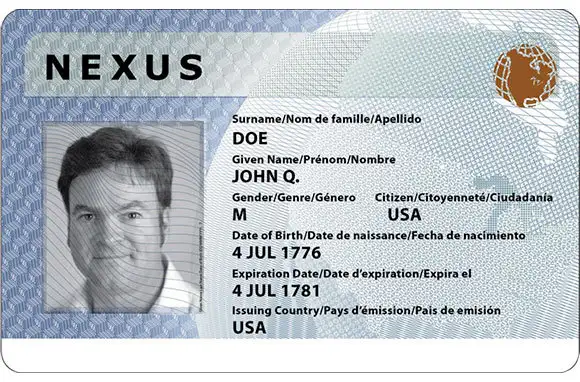
Nexus: U.S. and Canada
What It Does: Expedites two-way clearance at land, sea, and airport border stations.
How It Works: Your ID card is RFID-enabled, which allows border agents to direct you into express lanes.
Where It Works: Nexus gets you through expedited processing lanes at designated northern-border ports of entry, at Nexus kiosks at Canadian preclearance airports, and at marine reporting locations. You can also use Global Entry kiosks at participating U.S. airports.
Eligibility: Nexus is open to citizens or permanent residents of Canada and the U.S., subject to the "usual suspect" exclusions.
Enrollment: Enroll through the GOES portal, then schedule an interview at one of 24 centers at the busiest Canadian and U.S. border-crossing cities. The fee is $50 for five years.
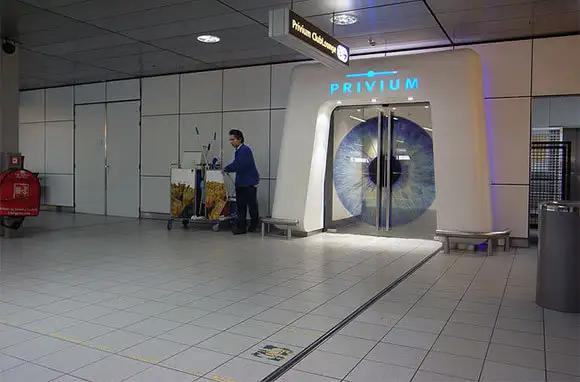
Flux: U.S. and the Netherlands
What It Does: Expedites two-way clearance at U.S. and Netherlands airports.
How It Works: Through enrollment in the Dutch Privium program, Flux provides access to express lines for border formalities and security screenings at Amsterdam's Schiphol Airport. A premium option includes additional benefits, including access to an airport lounge.
Where It Works: Flux is available at Schiphol Airport.
Eligibility: Flux is open to U.S. citizens who already belong to Global Entry and Dutch citizens.
Enrollment: Join Privium here; the annual fee is €121.
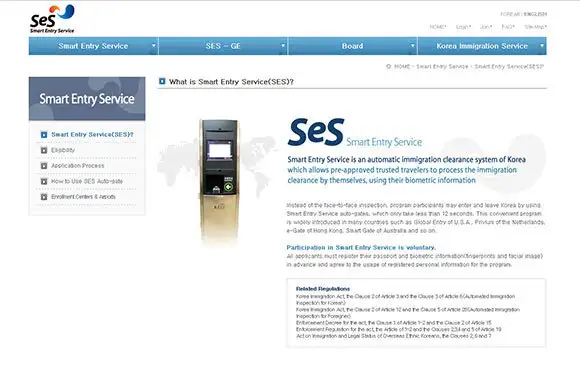
Smart Entry Service (SES): U.S. and South Korea
What It Does: Expedites entry through Korean airport customs and immigration systems.
How It Works: SES members use special "e-gates" that bypass some immigration lines.
Where It Works: SES is available at Seoul/Incheon, Seoul/Gimpo, and Gimhae airports.
Eligibility: SES is open to U.S. citizens who belong to Global Entry and Korean citizens.
Enrollment: Global Entry members apply for membership, then go through an in-person interview at the enrollment center at one of the Korean airports or at one of two centers in downtown Seoul. The fee is $100 for five years.
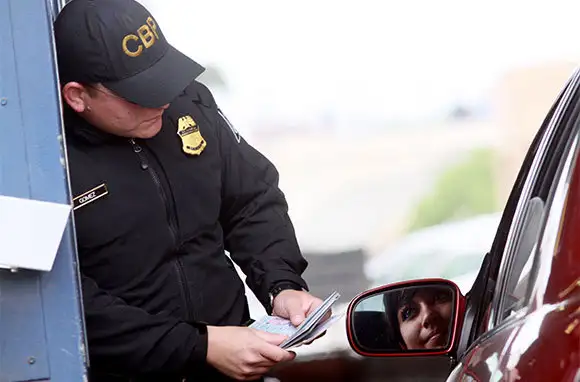
Sentri: U.S. and Mexico
What It Does: Expedites two-way border crossing between the U.S. and Mexico.
How It Works: Once enrolled, you get a card with RFID capability, along with a sticker for your car, which border guards can detect remotely and use to identify you and move you into an express lane. Sentri claims that members "wait for much shorter periods of time than those in regular lanes waiting to enter the United States, even at the busiest time of day." For details, check here.
Where It Works: Sentri is available for ground border crossings at El Paso, Texas; Otay Mesa, California; San Ysidro, California; Calexico, California; Nogales, Arizona; Hidalgo, Texas; Brownsville, Texas; Anzalduas, Texas; Laredo, Texas; and San Luis, Arizona. Also, Sentri members entering the U.S. from Mexico by air can use the Global Entry kiosks.
Eligibility: Sentri is open to U.S. citizens and permanent residents and Mexican nationals.
Enrollment: Apply through the GOES portal, then schedule an interview at one of nine major border cities in Arizona, California, and Texas. Aggregate fees are $122.25 per person.
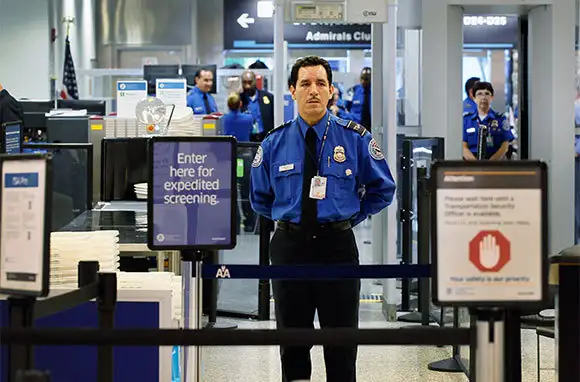
TSA PreCheck
What It Does: Expedites the security screening process at major U.S. airports.
How It Works: Membership provides two primary benefits when you pass through security at a U.S. airport or foreign airport with U.S. preclearance:
- The major benefit is access to a dedicated screening lane that, at least in theory, goes faster than ordinary lanes.
- A minor benefit is that you need not remove your shoes, light outerwear, or belt during screening and you don't need to take your 3-1-1 bag of liquids or your laptop from your carry-on (although, if the airport uses magnetic rather than radio screening, you still may have to ditch any shoes, belts, or clothing items with metal buttons or fixtures).
The system operates through airlines. You do not get any ID card; instead, you notify your airline of your membership and the airline automatically prints a TSA PreCheck code on your boarding pass. The easiest way to handle this is to enter your eligibility number through your frequent-flyer program, from which the airline can extract the data any time you fly. For details, check here.
Where It Works: TSA PreCheck is airline-based, and it works only when you're flying on Alaska Airlines, American Airlines, Delta, Hawaiian Airlines, United, US Airways, or Virgin America through one of 40 airports at which at least one of these lines provides TSA PreCheck. Check here for a full list.
Eligibility: U.S. citizens currently enrolled in CBP's Global Entry, Sentri, or Nexus programs are automatically eligible to participate in TSA PreCheck, as are Canadian citizens who are members of Nexus. Also, active-duty military personnel can use the TSA PreCheck system at a handful of airports by identifying themselves at the security entry point.
Enrollment: If you haven't entered TSA PreCheck through your airline, you can get in by signing up for Global Entry, Sentri, or Nexus. TSA has also announced that it will offer some degree of expedited clearance based on just the limited personal information you supply to the airline when making your reservation. But this won't be as good as the benefits that full members receive.
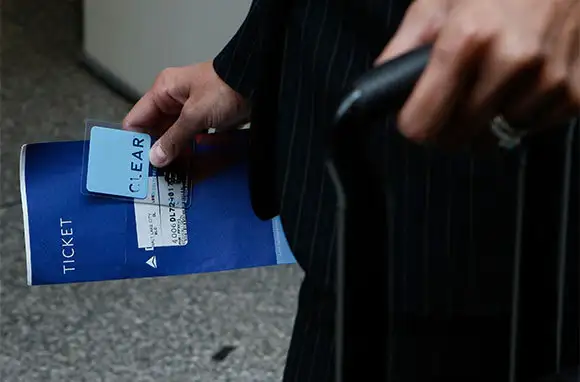
Clear: The Private Approach
What It Does: Expedites the security screening process at seven U.S. airports.
How It Works: At a participating airport, identify yourself with a membership card, provide biometrics (a fingerprint or an iris scan), then pass through special Clear lanes (paid for by Clear), with their own dedicated access. Clear also provides on-site agents to help you through the process. Presumably, the Clear lines are always short, regardless of how crowded the regular ones might be. The actual screening, however, remains the standard TSA procedure, with the usual rules about removing items from your clothing, opening laptops, and such. Clear does not limit you to any individual airline; you can use it for any departing flight. Read our first-person account of using Clear at San Francisco International in The Test Drive: Clear Card.
Where It Works: Clear currently operates at Dallas-Ft. Worth, Denver, Orlando, San Francisco, San Jose, and Westchester County airports; both Houston airports are listed as coming this fall. Clear is also negotiating with several other airports.
Eligibility: Clear is open to U.S. citizens and legal permanent residents ages 18 and over.
Enrollment: The process parallels GOES: Apply online, then provide a positive ID and your biometrics. Membership costs $175 per year for one person, plus $50 per year for each family member 18 or over; children under 18 do not pay and do not need a separate card.
You Might Also Like:
- A Guide to Air-Passenger Rights in the U.S. and Europe
- 10 Tips for Tight Airport Connections
- Seven Things You (Maybe) Shouldn't Buy Before You Travel
Like this story? Join the 1 million other travelers who read our free Deal Alert newsletter. It's full of our best tips, trip ideas, and travel deals. Subscribe here today!
We hand-pick everything we recommend and select items through testing and reviews. Some products are sent to us free of charge with no incentive to offer a favorable review. We offer our unbiased opinions and do not accept compensation to review products. All items are in stock and prices are accurate at the time of publication. If you buy something through our links, we may earn a commission.
Top Fares From
Today's Top Travel Deals
Brought to you by ShermansTravel
France: 8-Night Paris, Avignon & Nice...
Infinity Worldwide Vacations
 vacation
$2880+
vacation
$2880+
Poconos: 3 Nts in Garden of...
ResortsAndLodges.com
 hotel
$305+
hotel
$305+
7-Nt Canada & New England Cruise,...
Princess Cruises
 cruise
$839+
cruise
$839+



